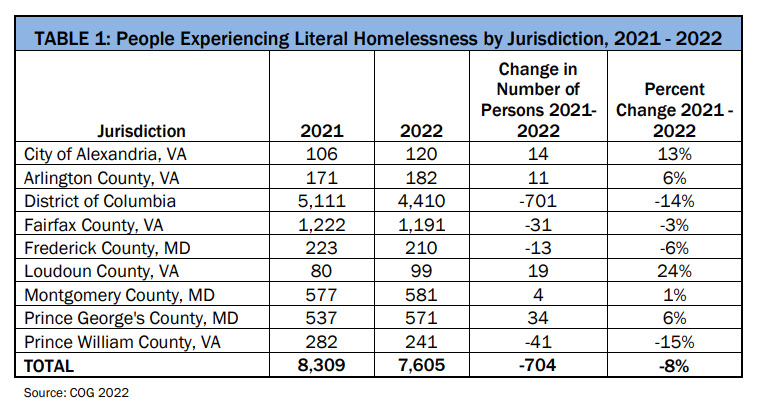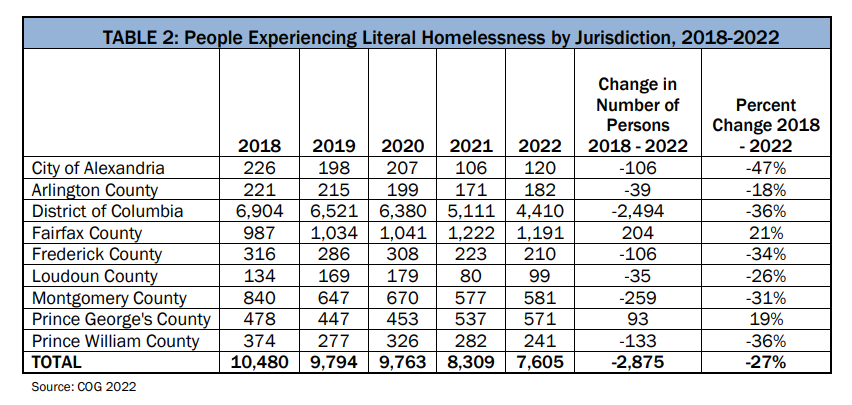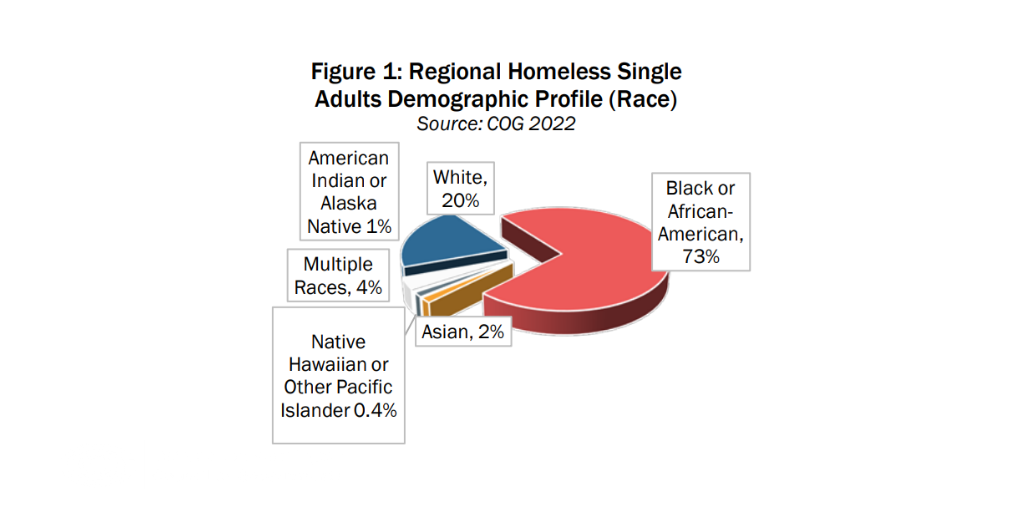According to a new report by the Metropolitan Washington Council of Governments (COG), there are 7,605 people experiencing homelessness in the region in 2022, the fewest recorded in over two decades. More than 24,000 people who were formerly experiencing homelessness are now residing in permanent housing.
The COG report, Homelessness in Metropolitan Washington, is a one-day snapshot of the region’s residents experiencing homelessness on January 26, 2022 and contains data from nine area jurisdictions. The eight percent reduction in homelessness from the year prior (down from 8,309 people) represents steady progress to ensure the experience of homelessness is rare, brief, and non-recurring.
“This report makes clear just how critical housing is for health and human life,” said Elisabeth Young, COG Homeless Services Committee Co-Chair and Community Partnership for the Prevention of Homelessness Senior Analyst. “And while the region should celebrate how far we’ve come on homelessness, we will need to increase the number of affordable and available permanent housing opportunities for the lowest income households to continue that progress.”

The report also notes the enumeration cannot capture “the enormous stress” the pandemic placed on the area homeless services systems to ensure those experiencing a housing crisis were able to remain safe.
“From vaccinations to shifting to establish non-congregate care, the region’s Continua of Care have remained dedicated to providing shelter and wrap-around services even during this enormously challenging time, and so we’re celebrating the steady progress we’re seeing in this year’s Point-in-Time count,” said Thomas Barnett, COG Homeless Services Committee Co-Chair and Fairfax County Office to Prevent and End Homelessness Director.
RESULTS AT THE LOCAL LEVEL
Seven of nine participating metropolitan Washington jurisdictions recorded decreases in the number of persons experiencing homelessness over the five-year period of 2018 to 2022, however just four of nine recorded decreases from 2021 to 2022.

VETERANS, FAMILIES, CHILDREN, AND OLDER ADULTS
The Point-in-Time (PIT) report also provides extensive data on families, children, and many subpopulations. For example:
- The number of veterans experiencing homelessness was the lowest ever recorded this year—292 people, and down 40 percent over the last five years. All nine Continua of Care recorded a decrease in veterans experiencing homelessness since 2018.
- The number of families experiencing homelessness is down 50 percent since 2018, significantly exceeding changes observed nationally.
- Children represent 18 percent of the region’s total number of persons experiencing homelessness (1,384 children) and 60 percent of all persons in homeless families, a proportion that remains unchanged for over five years.
- There are a growing number of senior citizens facing a housing crisis or seeking emergency shelter in the region—982 people, including 118 unsheltered older adults. The oldest was 96 years old, who was counted in shelter on the night of the PIT count.
RACIAL INEQUITY AND HOMELESSNESS
With the exceptions of Frederick and Loudoun counties, persons experiencing homelessness are disproportionately Black or African American. According to the report, the legacy of structural racism has led to racial disparities across the region, including in the homeless services system.
The region began working together with COG in 2021 on a racial equity systems analysis to review operations and develop an equity-driven, results-based action plan for ending racial disparities in the homeless services system.

PARTICIPATING JURISDICTIONS
The report was compiled by the COG Homeless Services Planning and Coordination Committee. Participating jurisdictions are the City of Alexandria; Arlington County; the District of Columbia; Fairfax County, including data from the City of Falls Church and the City of Fairfax; Frederick City and County; Loudoun County; Montgomery County; Prince George’s County, including data from the City of Bowie; and Prince William County, including data from the City of Manassas and the City of Manassas Park.
MORE: Homelessness in Metropolitan Washington